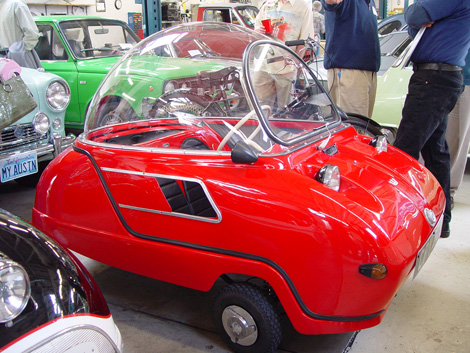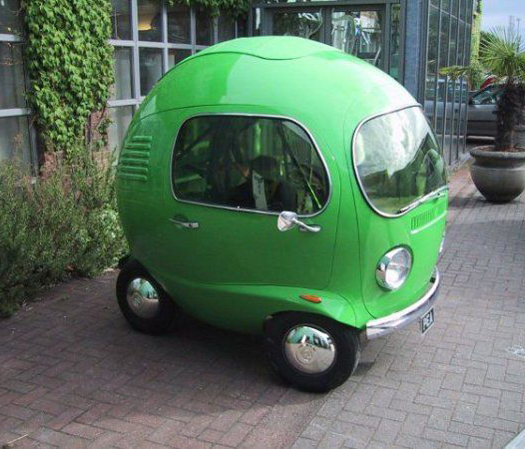Who can forget the iconic image of the bubble car that adorned many European roads in the 1950s and 1960s?
The bubble car, or microcar as it was officially known, came about mainly as a result of the Suez Crisis in 1956 and the need for a cheaper form of motorised transport due to high petrol prices.
At that time petrol stocks were sliding and the British Government had imposed petrol rationing with only ten gallons a month allowed. That caused a downturn in the sale of large petrol guzzling vehicles, creating a mini boom in the market for what became known as bubble cars.
The popularity of the bubble car was not just in its low petrol consumption – most having engines under 700cc – but that as three-wheelers most countries classed them as motorcycles, which meant a lower tax bracket and less expensive licence required.

Early Bubble Cars
The precursor to the bubble car was the Messerschmitt KR175 and KR200, and the FMR Tg500. All had aircraft-style bubble canopies which helped coin the term bubble car as a reference to all these post-war microcars.
German companies were the main producers of these types of vehicles, closely followed by Italian and French manufacturers. In Germany it was the aircraft manufacturers who had previously made military aircraft for the Luftwaffe in World War Two (eg Heinkel and Messerschmitt) who retooled to make the bubble cars.
Italian luxury car manufacturer ISO produced the Isetta, which was made by BMW under licence, powering it with their motorcycle engines. In France manufacturers made similar vehicles called ‘voiturettes’ or ‘small cars’, but these were mainly sold domestically.
The United Kingdom had licence-built right-hand drive versions of the Heinkel Kabine and the Isetta.
3 Wheeled Bubbles

The British version of the Isetta was built with only one rear wheel instead of a pair of wheels positioned close together as in the normal Isetta design, so as to take advantage of the three-wheel vehicle laws in the UK.
There were also three-wheeled microcars manufactured in the UK, the most notable perhaps being the Peel Trident from the Peel Engineering Company on the Isle of Man*.
The Mini & The End Of The Bubble Cars
The introduction of the Mini by UK manufacturer Austin (although originally branded the ‘Morris Mini-Minor’) in 1959 is seen by many as heralding the end of the age of the bubble car – an inexpensive, frugal vehicle that could seat more than one at not much more money than the bubble cars. The Mini could seat four adults and was a much more comfortable way of covering longer distances at comparable running costs.
Now of course you can buy the modern Mini (really a BMW, although still manufactured at the Cowley plant in Oxford in the UK), which compared with the original is considerably ‘beefed up’ in all departments! And at $25,000+ the price is somewhat beefed up as well. Better arrange that car loan!
If you’d like to arrange finance for a new car, big or mini, call us on 1300 889 669, or simply apply online today.
*purists might say that the Isle of Man is not strictly speaking in the UK, and they’d be right
“Bubble Car” (top) Image Credit: Allan Watkins under a Creative Commons 2.0 license. Image has been cropped.
“Peel Trident” Image Credit: Craig Howell under a Creative Commons 2.0 license. Image has been cropped.




